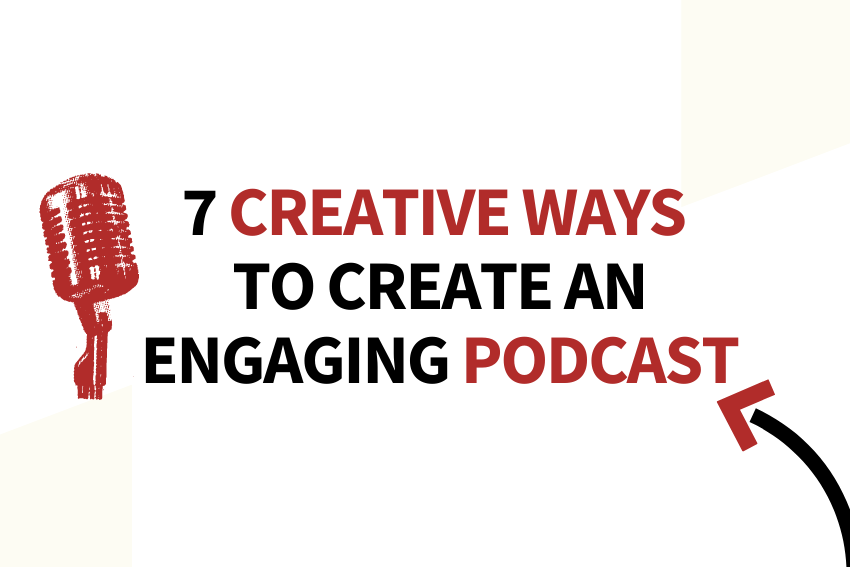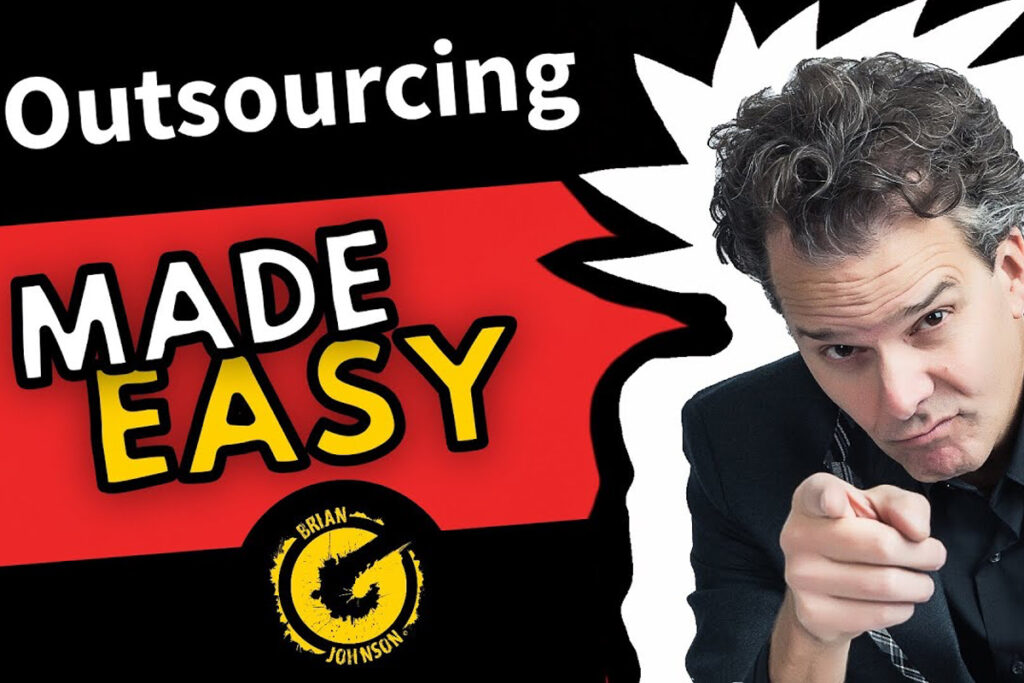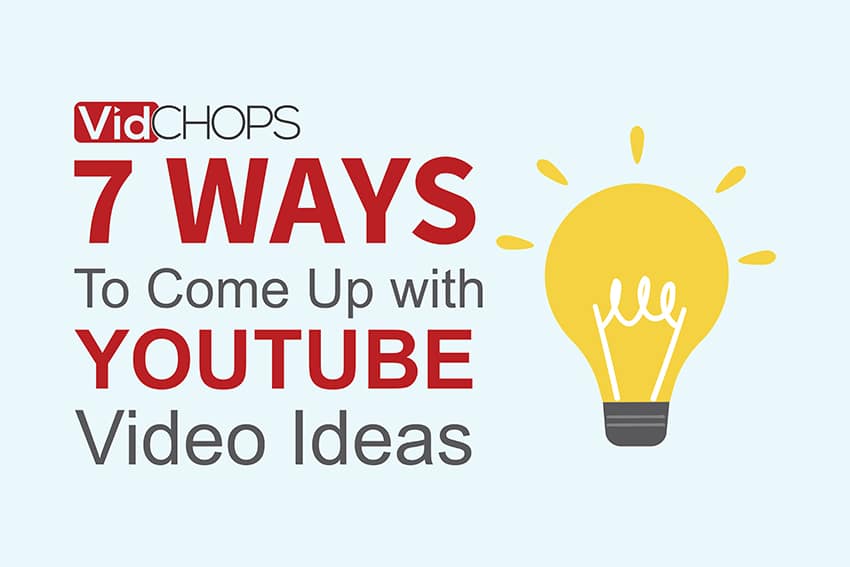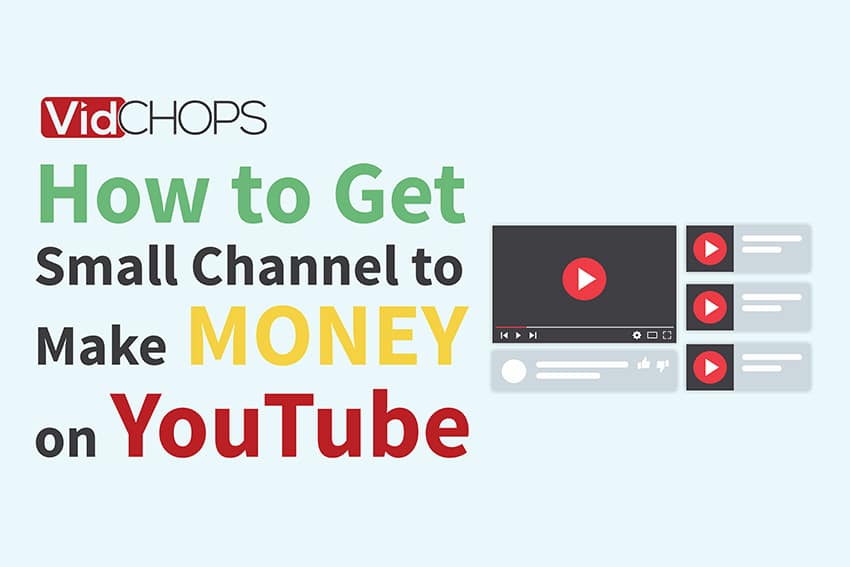How Top Video Creators Turn Simple Views Into 7-Figure Businesses
We break it all down on The Video Creatr Show, click the link below.

Podcasts are quickly becoming one of the most popular mediums for content creators. It is easy to see why with how accessible, engaging, and affordable they can be.
Not only do you have an opportunity to share your message with a larger audience, but you also reach different demographics than you would through traditional media like TV or radio.
However, creating a compelling podcast isn’t as simple as just recording yourself talking into a microphone (although it can be that easy). To create something truly persuasive, many elements go into making it stand out from other podcasts in your niche.
If you’re looking for ways to take your podcasting game up another level, then here are seven creative ways that you can make yours memorable.
1 – Choose a subject you’re interested in
Many podcasters make the mistake of focusing on what they think the audience will want to hear, but this strategy can often backfire. Audience listening trends can be very changeable, with themes going quickly in and out of style.
Plus, creating a podcast takes way too much time, effort, and money to do it about something that you’re not fully invested in. Instead, it would be best if you focused on something interesting to you.
This way, when it comes time to record and edit your podcast, you won’t be forcing yourself into speaking about a subject just because your audience might like it. They’ll sense the difference in authenticity between this approach and simply trying to guess what they want so you can create a podcast about something that might be engaging for them but isn’t for you.
Plus, if you chose a topic that you are actually interested in, it’s much more likely that you’ll enjoy making the podcast, which means you’ll enjoy the time invested in research, recording, podcast editing, and production. So it’s more likely that you’ll want to stick with it in the long term.
2 – Get your listeners involved in your episodes
There are many ways to do this, but it’s an excellent way to get creative ideas for the upcoming episodes. You’ll be staying in touch with how your audience responds, get valuable feedback to see what’s working and what’s not, and ideas for future topics or guests.
Plus, you’ll also be helping them feel as though they have a voice and can contribute their opinions on what topics they would like to hear more about.
You can do this via email, social media, polls or surveys, or through whichever medium you usually engage with your listeners. Or even ask them to submit questions for your next podcast or guest, and that way, you can drum up excitement ahead of time so that they can’t wait to tune in.
3 – Play around with your podcast format
See what works best for you. People often associate podcasts with interviews, but the truth is that there are so many other exciting ways to approach an episode.
Don’t feel like you need to structure your episodes around a typical format, such as interview questions and answers. One person doesn’t need to be interviewing another; it can actually work just as well when two people who know each other have a conversation about something they’re both familiar with and passionate about.
Plus, this type of content will sound more natural than someone trying to memorize responses from prepared notes or talking points because their thoughts were structured in advance following specific questions. You can also try out other formats that are different than what you might typically be used to, such as roundtable discussions or a solo show.
Don’t forget to have fun with it!
Podcasting isn’t just about being informative; it’s also a great way to entertain your listeners. So if you’re having trouble putting together the perfect episode that is interesting and engaging for your audience, try adding in some humor, amusing personal anecdotes, or other types of entertainment aspects.
4 – End by giving listeners a call to action
This can make your podcast more memorable and help listeners feel like the conversation carries on after the episode.
Give them some fun homework or topics for self-reflection that are relevant to that day’s episode. That way, they can also continue the conversation on social media, which is excellent to promote your podcast while keeping them engaged.
You can even ask them to share their thoughts and ideas on the topic with you by email or through social media. Or even suggest that your listeners use a specific hashtag when sharing this episode with friends and family.
You could also leave listeners wanting more by ending an episode on an exciting note that leaves them wondering what will happen next and then continuing the story in the following episode.
Try not to use your call to action as an opportunity for shameless self-promotion, though; nobody likes hearing unwanted advertisements when they’re expecting listening to something else.
5 – Use storytelling
Telling stories can be a great way to keep people engaged, especially when they relate to the topic at hand. Stories are more likely than facts and figures alone to stick in someone’s mind because it triggers their imagination and brings them into your tale so that listeners feel like they’ve experienced what you’re talking about rather than just heard or read about it.
It helps bring your topic to life by making it relatable for different types of people who may have very personal perspectives but are all sharing common ground because they’re listening (and hopefully relating back) to something shared in common between many other individuals too.
You can also use storytelling to create a “puzzle piece” for your listener. People love puzzles because they have the opportunity to complete something that someone else has started. Figure out a puzzle piece or storyline that will grab the listener’s attention while also helping them feel like they’re part of the show!
And don’t be afraid of silence.
Silence can be quite powerful when used correctly. It can give you a moment to think when you need it, if you’re struggling to find the right words or remember an anecdote. And it can also be used to ease tension or to provide an opportunity for listeners to reflect on what has been shared so far before moving on with more content.
6 – Collaborate with other podcasters
Podcasting lends itself well to collaborations because it’s easy to have conversations on the fly, making for natural conversation.
Whether you’re collaborating with someone who has a strong following and is already well-established in this space or someone relatively new, reaching out and asking them if they’d be interested in having you as a guest could help bring you more exposure and reach. Plus, when you find podcasters that share similar interests or that you have good chemistry with, they can also come on your show as future guests.
You could also consider forming an online community with podcasters who cover similar topics where everyone can come together to talk about what matters to all of you and create opportunities for collaboration across the board, acting as a mutual support network.
7 – Create a unique intro to each episode
The first thing your listeners will hear when they hit play is the audio file you upload for them. So it must give them an idea of what topics you will discuss in this particular podcast.
It should reflect your narrative style, your unique selling point that sets you apart from others and give some insight into what audience members might expect from listening to future episodes as well.
If you struggle to naturally come up with creative ideas on the fly, then we recommend writing down three or four different options before recording just so you have something prepared if inspiration doesn’t strike right away during recording.
Now that you’ve designed an engaging podcast following these pointers, here are a few tips to ensure that your podcast is also a success.
Be yourself
Podcasts are known for being a little more casual and off-the-cuff than many other formats of media. This means that you have some leeway in terms of how formal or informal you feel comfortable with presenting yourself as an individual podcaster.
Use the format to your advantage, and be yourself.
While there is definitely room for professional, polished content too, if it’s what you’re going after, consider using this opportunity to give people a glimpse into who you are by allowing them access into your own particular style through things like sound effects, music choices (if appropriate), and sharing personal content.
Your podcast doesn’t need to be perfect from day one; it can be a learning process to find the format that works for you, so let yourself make mistakes the way and enjoy it!
Invest in equipment
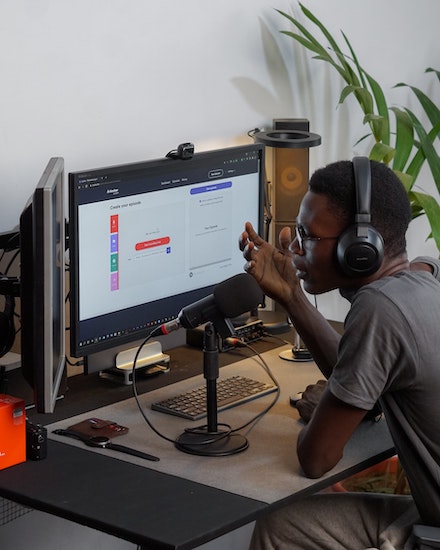
One thing you should try to get right from the beginning is making sure that you don’t lose listeners because of poor audio quality or unprofessional editing.
No matter how great the content or topic is, if these mediums don’t have a minimum sound quality, they can become a distraction, and it won’t be easy to get people to keep on listening.
It doesn’t have to be super expensive, but investing some money upfront for quality equipment and creating a suitable recording space, can make a world of difference in making sure that your content reaches the people you want.
Have your podcast transcribed
There are many benefits to this, but the main one is that you’re giving people another way to access your content.
When they hear something during an episode of your show that really resonates with them or has a great piece of advice for their life, they can go back later and read through what was said instead of trying to remember all those details from memory (or not at all).
Plus, if someone stumbles across your blog post about the transcript afterward, then it might also encourage them to check out more episodes because they didn’t realize how much helpful information there was on offer.
Combine your audio podcast with video
Don’t underestimate the power of visuals, even when it comes to podcasts.
In this day and age, with technology becoming more advanced and affordable, it can be easy to record a video podcast and turn it into an audio format, so you can get the best of both worlds and access to audiences that prefer either medium.
It doesn’t need to require any extra time investment on your part because these days, almost all recording devices include built-in cameras, which make it simple enough for anyone to use.
And video editing services like Vidchops make it easier than ever to have great, professionally edited video content available for those that prefer a visual presentation, leaving you more time to focus on creating the content for your next episode.
Don’t forget that if you want your podcasts to be engaging, it’s essential that your content is unique, interesting, and relevant. So try to think of ways you can make your podcast stand out from the crowd and give your listeners reasons to return week after week by creating an engaging podcast today.
